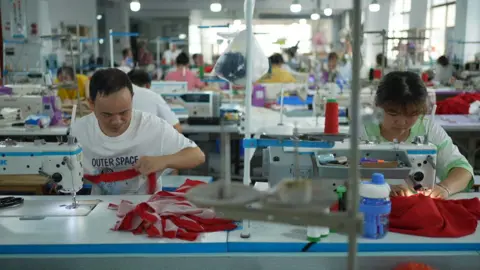Mark Carney, who has yet to hold elected office but boasts an extensive background in economic policymaking and investment, was sworn in Friday morning as Canada’s 24th prime minister. He will not have the luxury of easing into his new position.
Canada is currently facing significant instability as its relationship with the United States has entered a profound crisis following President Trump’s election, during which he initiated numerous attacks on Canada’s economy and sovereignty.
Mr. Carney will seek to engage with Mr. Trump, who has implemented a variety of tariffs and threats against Canada, even suggesting the takeover of the country, while simultaneously gearing up for a federal election campaign.
He does not currently hold a seat in Parliament, and with his party holding only a minority of seats in the House of Commons, he has little choice but to immediately call for a federal election, likely scheduled by May.
Mr. Carney, who will turn 60 on Sunday, succeeds Justin Trudeau, who served as Canada’s leader for nearly a decade. He was elected as the leader of the Liberal Party on Sunday by approximately 152,000 members, securing 86 percent of the votes.
In a traditional swearing-in ceremony that included an oath of allegiance to King Charles III, Mr. Carney was sworn in by Mary Simon, Canada’s governor-general, who acts as the king’s representative and is the first Indigenous person to hold this position.
After the ceremony, Mr. Carney addressed reporters, labeling Mr. Trump’s threats of making Canada the 51st state as “crazy.”
Currently, he has no plans to meet with Mr. Trump, instead focusing on fortifying Canada’s economy against trade threats.
“We know that by working together, we can achieve far more than anyone could take away from us,” he stated.
Prior to this role, Mr. Carney served as the governor of the Bank of Canada during the 2008 global financial crisis and later as the governor of the Bank of England — the first and so far only foreigner appointed to the position — from 2013 throughout the Brexit transition.
Before his career in central banking, he spent over a decade at Goldman Sachs. Since departing from the Bank of England, he has held high-level positions on corporate boards and has become a prominent global advocate for green investment.
Mr. Carney has expressed his intent to maintain a hardline stance against Mr. Trump, while simultaneously pursuing a trade agreement with the president. Canada has enacted two rounds of retaliatory tariffs against U.S. exports and has indicated its willingness to impose further measures.
“My government will maintain our tariffs until the Americans show us respect — and provide credible, reliable commitments to free and fair trade,” he declared to party members in Ottawa on Sunday as he accepted the leadership role.
In a bid to seek new allies for Canada amid a strained relationship with the United States, Mr. Carney’s initial foreign visits will be to London and Paris.
The complexities arising from Mr. Trump’s statehood threats and tariffs will consume much of Mr. Carney’s attention, but he has made policy commitments that suggest a centrist approach.
He has pledged to usher in a period of fiscal responsibility and tax reductions while utilizing his business acumen to attract investments that could stimulate Canada’s economy.
Additionally, Mr. Carney will need to address pressing domestic issues, such as the ongoing high cost of living and the ramifications of record immigration that led to Mr. Trudeau’s resignation.
However, the economic repercussions stemming from a range of tariffs implemented by Mr. Trump will likely dominate his initial days in office.
He will need to counter Mr. Trump’s threats of introducing new charges on Canadian goods. Economists anticipate that the current measures imposed by the U.S. administration, along with the slowdown in investment due to the uncertainty surrounding future developments, could adversely impact the Canadian economy and potentially lead to a recession.
Then there’s the impending election. Mr. Carney must demonstrate that, despite his lack of political office experience, he is still the most suitable candidate, not just to party members who support him but to the wider electorate.
In the federal election, he will compete against Pierre Poilievre, the leader of the Conservative Party, who has helped his party secure a significant lead in public opinion polls and raised nearly double the fundraising amounts compared to the Liberals in 2024.
President Trump’s tenure, however, has significantly altered the political landscape.
A seasoned politician known for his impactful slogans, Mr. Poilievre, 45, is reportedly adapting his messaging, aiming to present himself as the strongest candidate to confront Washington while not alienating pro-Trump conservatives within Canada.
Mr. Poilievre’s strategy has primarily been to showcase the ways in which the Liberal Party has “failed” Canada, focusing on issues such as crime, rising housing costs, an unpopular consumer carbon tax, and a surge in immigration.
However, with Mr. Trump’s rise and his stance towards Canada, along with Mr. Trudeau’s resignation due to declining popularity, the Conservatives’ lead has diminished significantly in a remarkable turnaround.
Recent opinion polls indicate that, under Mr. Carney’s leadership, the Liberals could have a chance of securing a win.
Given his extensive qualifications in finance, there is little doubt about Mr. Carney’s capability to convey his message in boardrooms or monetary policy discussions. His central banking roles often showcased his sermonic approach, at times perceived as dismissive of the media.
Nevertheless, he will need to cultivate a more relatable communication style to effectively campaign.
Mr. Carney’s challenge will be to swiftly master “retail politics” — the skill of invigorating a room with a speech, ensuring that individual supporters feel valued and heard, and navigating media relations that effectively convey his points, noted Fen Hampson, a professor of international affairs at Carleton University in Ottawa.
“These interpersonal skills do not come naturally to someone who has spent their career as a banker,” remarked Mr. Hampson. “His communication and retail political skills are still a work in progress.”
In forming his cabinet, Mr. Carney has upheld a roughly equal distribution of men and women, continuing the precedent set by Mr. Trudeau when he established Canada’s first gender-balanced cabinet after his election in 2015.
Melanie Joly will remain as foreign minister, while Dominic LeBlanc, a close associate of Mr. Trudeau, is appointed as the new minister of international trade, overseeing tariff discussions alongside the new finance minister, François-Philippe Champagne.
The previous finance minister, Chrystia Freeland, who was the runner-up in the leadership race, will continue in the cabinet as the minister of transport and internal trade.










 Bengali (Bangladesh) ·
Bengali (Bangladesh) ·  English (United States) ·
English (United States) ·